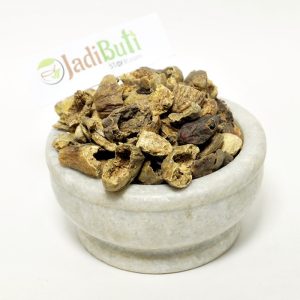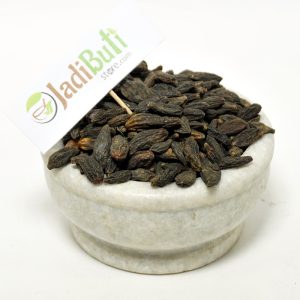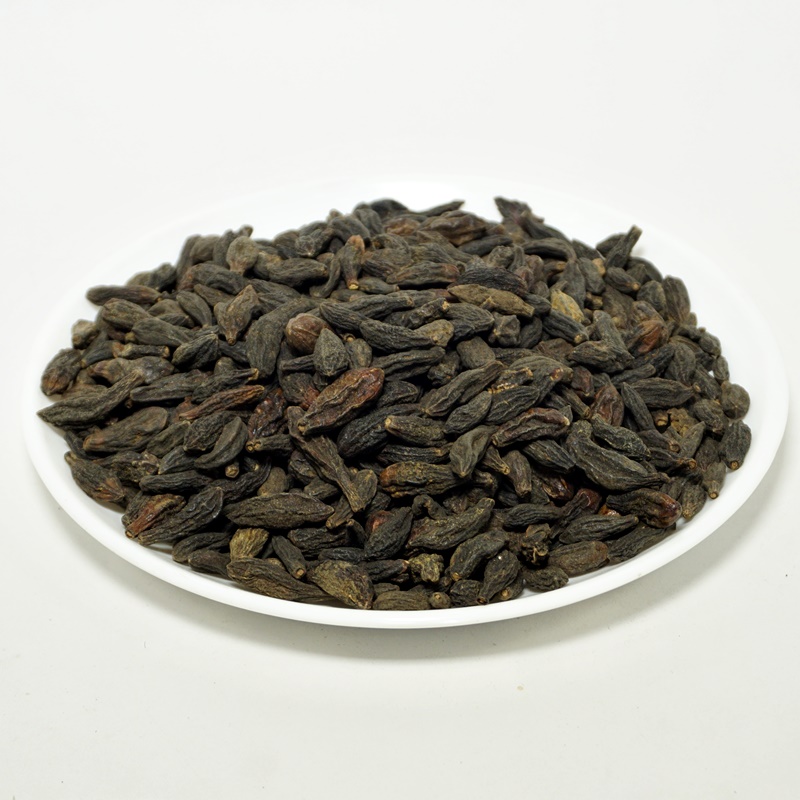chebulic myrobalan
Showing all 2 results
-


Harad Badi Chilka – हरद बड़ी छिलका – chebulic myrobalan – Terminalia Chebula
₹90.00 – ₹680.00Quick ViewHarad Badi Chilka | yellow Haritaki
Scientific Name : chebulic myrobalan
Ayurvedic classification of Yellow Haritaki
Ayurvedic Classification Description Rasa (taste) Astringent, sweet, sour, and bitter Guna (qualities) Light, dry, and sharp Virya (potency) Heating Vipaka (post-digestive effect) Sweet Dosha effect Balances all three doshas (Vata, Pitta, and Kapha) Karma (actions) Laxative, rejuvenative, astringent, expectorant, antispasmodic, and tonic Dhatu (tissue) affinity Works on all seven tissues (dhatus) of the body, with a particular affinity for the digestive and respiratory tissues Srotas (channel) affinity Works on the digestive, respiratory, and circulatory channels Prabhava (special effect) Promotes longevity and supports overall health and well-being Active compounds and benefits found in yellow haritaki:
Active Compound Benefits Chebulic acid Antioxidant, anti-inflammatory, and anti-cancer properties Gallic acid Anti-inflammatory, anti-cancer, and anti-microbial properties Ellagic acid Antioxidant, anti-inflammatory, and anti-cancer properties Corilagin Anti-inflammatory, anti-cancer, and anti-microbial properties Punicalagin Antioxidant, anti-inflammatory, and anti-cancer properties Tannins Anti-inflammatory, anti-diabetic, and anti-cancer properties Arjungenin Anti-inflammatory and cardioprotective properties Chebulagic acid Anti-inflammatory, anti-cancer, and anti-diabetic properties Quercetin Anti-inflammatory, antioxidant, and immune-boosting properties Kaempferol Anti-inflammatory, antioxidant, and immune-boosting properties -

 SOLD OUT
SOLD OUTHarad choti (Kali) – Haritaki- हरड छोटी – Chebulic myrobalan
₹140.00 – ₹1,100.00Quick ViewAyurvedic classification of Haritaki (Terminalia chebula):
Ayurvedic Classification Description Rasa (taste) Astringent, sweet, sour, bitter, pungent Guna (qualities) Light, dry, sharp, rough Virya (potency) Heating Vipaka (post-digestive effect) Sweet Dosha effect Balances all three doshas (Vata, Pitta, and Kapha) Karma (actions) Digestive, carminative, laxative, rejuvenative, anti-inflammatory, anti-aging, and expectorant Dhatu (tissue) affinity Works primarily on the digestive, respiratory, and reproductive tissues Srotas (channel) affinity Works primarily on the digestive, respiratory, and reproductive channels Prabhava (special effect) Considered a “Tridoshic Rasayana,” which means it can help to balance all three doshas and promote longevity Active compounds and their benefits found in Haritaki (Terminalia chebula):
Active Compound Benefits Tannins Antioxidant, anti-inflammatory, and anti-cancer properties Chebulic acid Antioxidant and anti-inflammatory properties Gallic acid Antioxidant, anti-inflammatory, and anti-cancer properties Ellagic acid Antioxidant and anti-cancer properties Terchebin Antioxidant and anti-inflammatory properties Arjungenin Anti-inflammatory and anti-cancer properties Harmane Antimicrobial, anti-inflammatory, and neuroprotective properties Luteolin Anti-inflammatory and antioxidant properties
